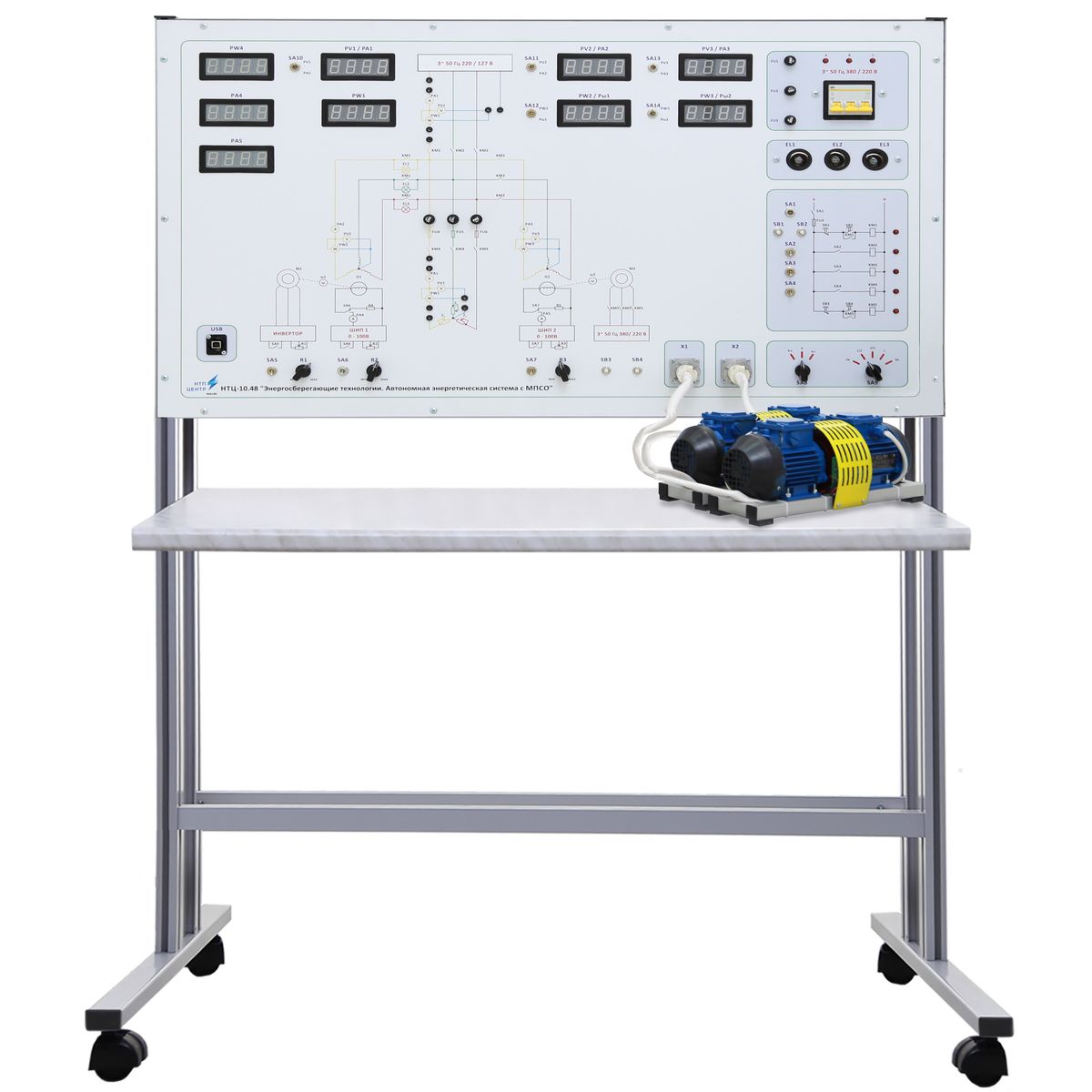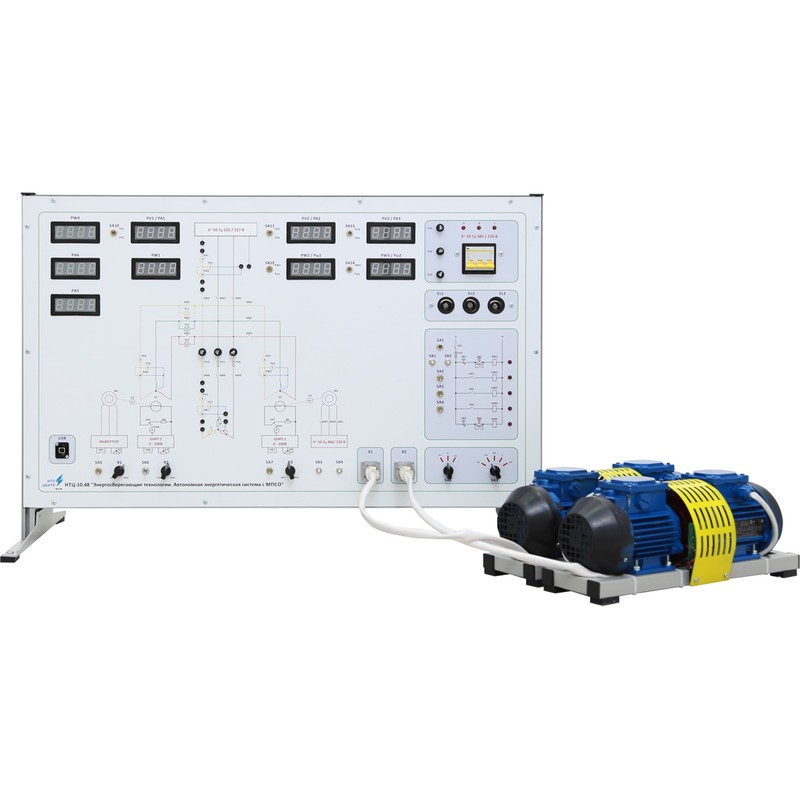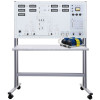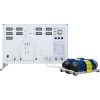NTC-10.48 “Energy saving technologies. Autonomous energy system DCM-SG”
Br0.00
The educational laboratory system is intended for use as educational equipment in higher and secondary specialized educational institutions during laboratory and practical classes.
- the case in which a part of the electrical equipment, electronic boards, front panel and countertop of the integrated desktop are installed;
- two machine units, each includes one synchronous generator and one asynchronous electric motor with a squirrel-cage rotor, as well as an optical speed pick up.
The stand is equipped with an electric machine based on electric motor of low (90 W) power.
Has two h/w versions: full size bench top version and table version.
The following equipment is located inside:
- Frequency converter designed to form a three-phase AC network of controlled frequency and supply voltage of a racing asynchronous electric motor with a short-circuit rotor.
- Power supplies designed to supply the excitation windings of three-phase synchronous generators.
- The measurement module is built on the basis of a digital measuring system built into the stand and connected to a personal computer via the USB bus. It shall be realized the excitation currents calculations of synchronous generators, the rotational speeds of machine units, powers and voltages, as well as the organization of data exchange with PC and the output of measured values to the front panel of the stand.
- Relay-contactor control, which allows to:
- connect generators for parallel operation with a network of 3 ~ 50 Hz 220/127 V;
- connect the load, choose its type (active, active-inductive, active-capacitive) and its value.
- Incandescent lamps for synchronizing a three-phase generator with the network.
- Unit of the relay subsystem.
- Terminating resistors, capacitors and inductors in a three-phase circuit (three steps).
On the front panel of the stand are electrical circuits of objects of study. All schemes are divided into groups in accordance with the theme of ongoing laboratory work. The panel contains switching sockets, indicators of digital devices, switching equipment, as well as controls that allow you to change the parameters of the elements during laboratory work.
The controls on the front panel of the stand:
- setting potentiometers of the excitation current of synchronous generators;
- setting potentiometer of the frequency converter, allowing smoothly changing the frequency setting and supply voltage of an asynchronous motor with a short-circuit rotor;
- controls for the relay subsystem.
To conduct laboratory work, it is necessary to assemble a diagram of the object of study using standardized jumpers, which allow you to present the diagram in a visual form.
Laboratory work is possible both in manual mode and in dialogue mode with a personal computer.
The training system is supplied with:
- Software, which provides:
- studying theoretical materials;
- initial verification and consolidation of the acquired knowledge with tests included in the program (the teacher has the ability to edit tests and create new ones);
- carrying out laboratory work with a detailed step-by-step description of the experiments. Students assemble the circuit on the stand panel, according to the specified parameters, carry out experiments according to the instructions, register their observations and measurements in the appropriate fields and tables of the program. On the basis of the data obtained, by the software proceeds to subsequent calculations and the construction of graphs (depending on the content of the laboratory work);
- after each experiment, an individual final report on the laboratory work is generated, saved in the .doc format.
- a set of methodological and technical documentation intended for the teaching staff.
Experiments provided
- The study of autonomous power system with combined load.
- The calculation efficiency and voltage losses of the power unit.
- The study of power unit synchronization methods.
- The study of a three-phase power unit, operating in parallel with the circuit.
- The study of parallel operation of two power units.
Technical specifications
| Power supply | 3~50 Hz 380 V 3P+PE+N | |
| Power consumption, Watt, max | 250 | |
| Stand overall dimensions, max: | ||
| Width, mm | 1010 | |
| Height, mm | 1460 | |
| Depth, mm | 600 | |
| Desktop version overall dimensions, max: | ||
| Width, mm | 1010 | |
| Height, mm | 670 | |
| Depth, mm | 600 | |
| High power machine aggregate overall dimensions, max: | ||
| Length, mm | 500 | |
| Width, mm | 150 | |
| Height, mm | 200 | |
| Weight, kg, max | 135 | |
Scope of delivery
- laboratory training system – 1 pc.;
- accompanying materials in electronic format – 1 pc.;
- set of jumpers – 1 pc.;
- passport – 1 pc.
 Русский
Русский


